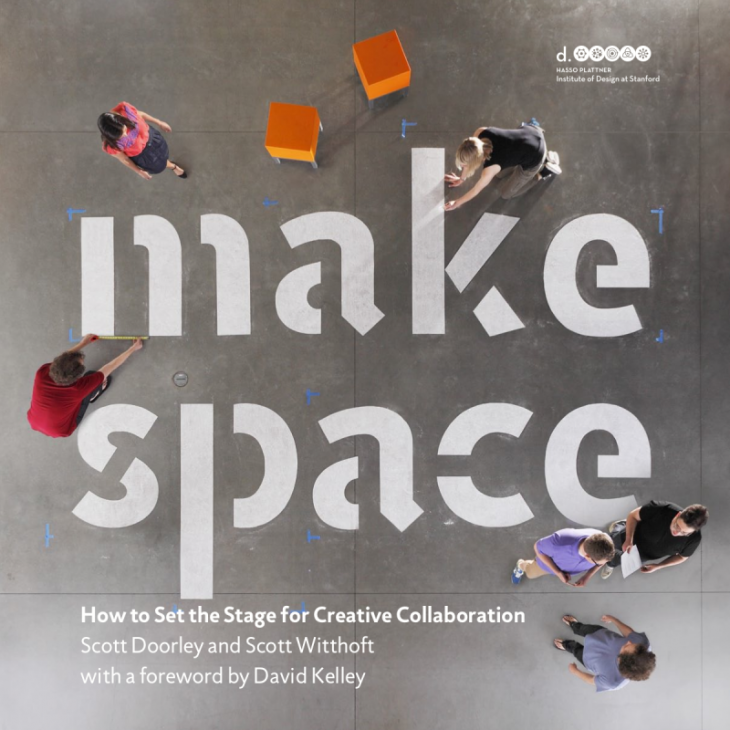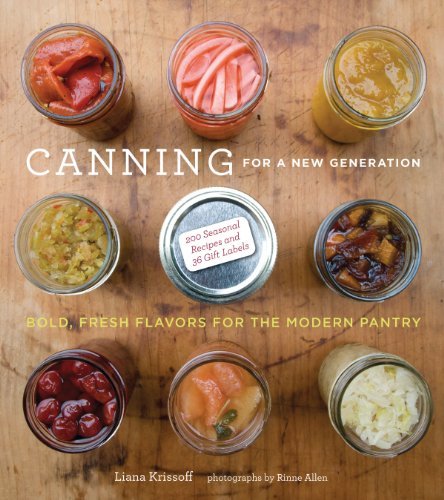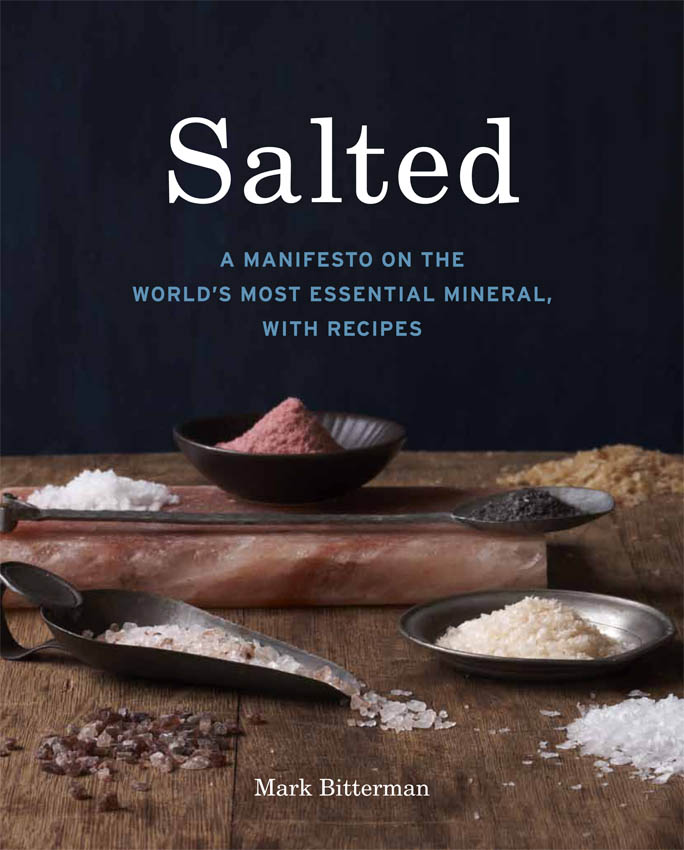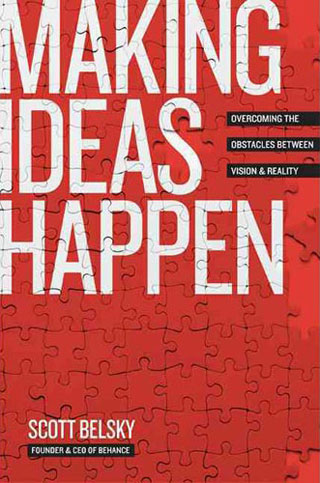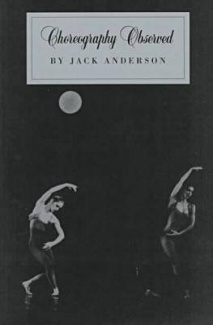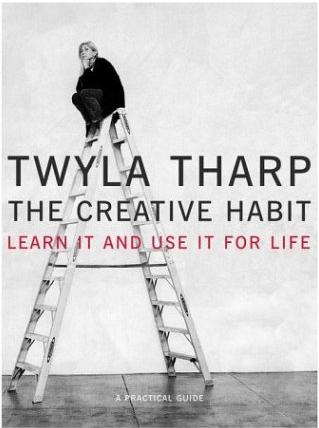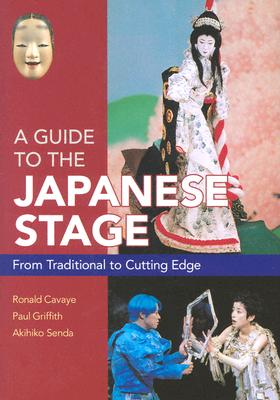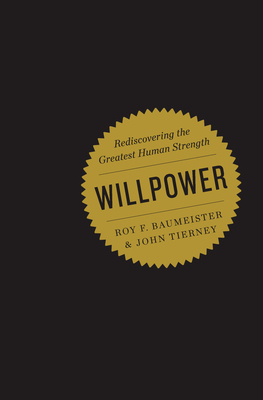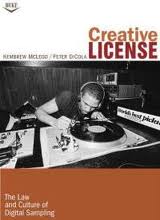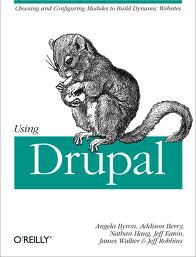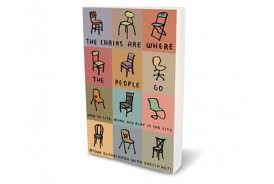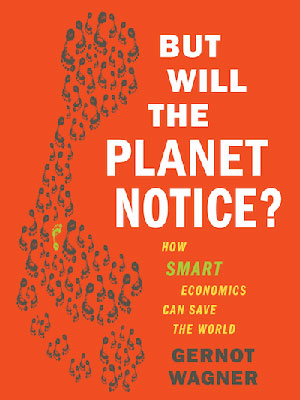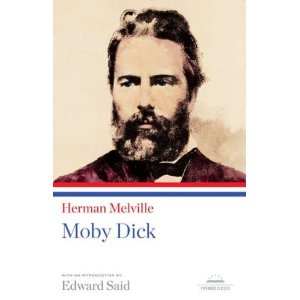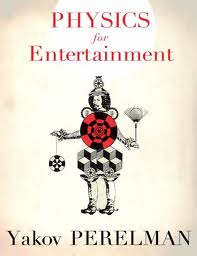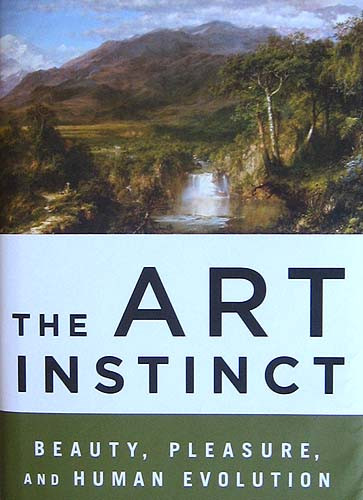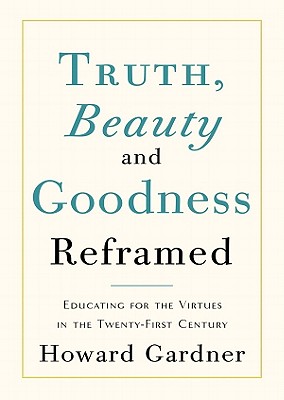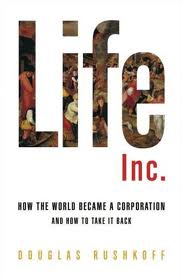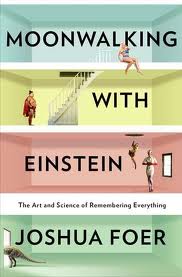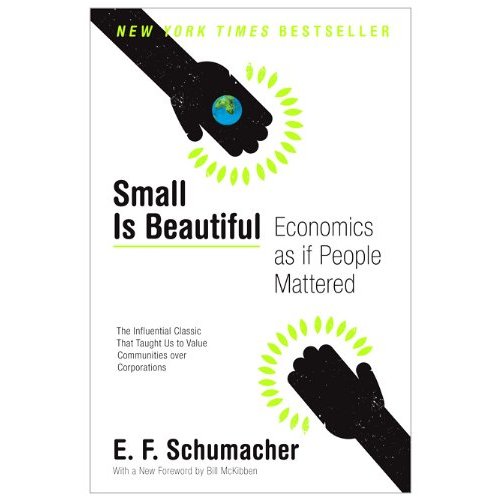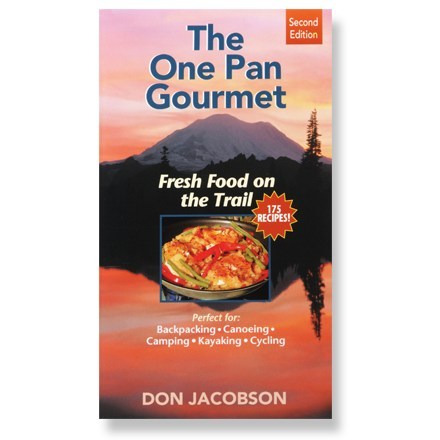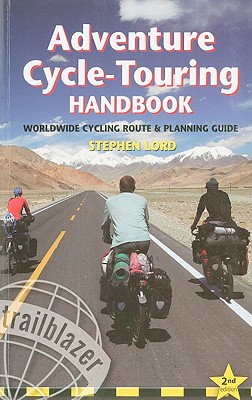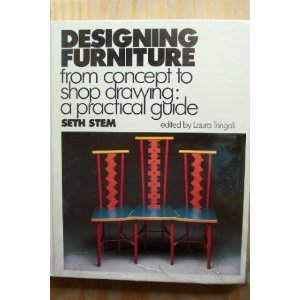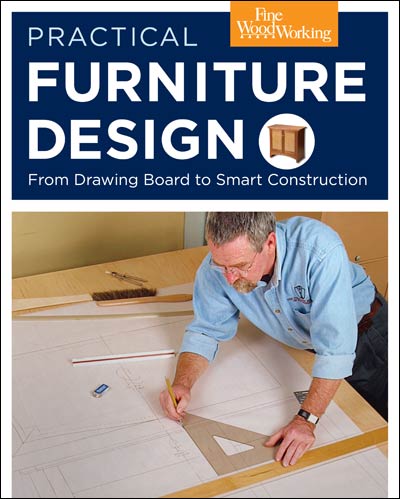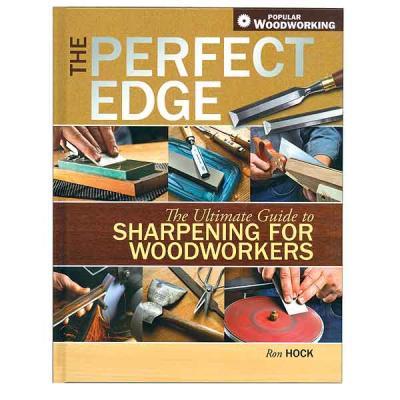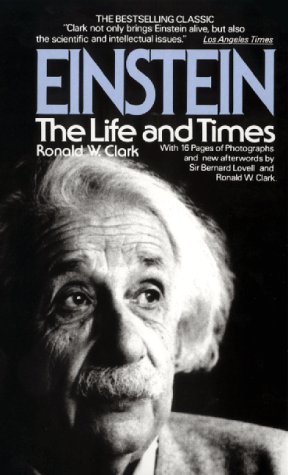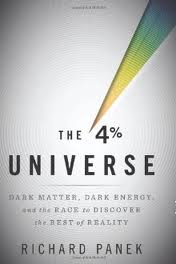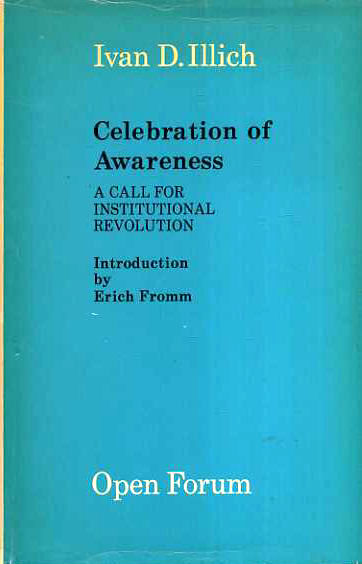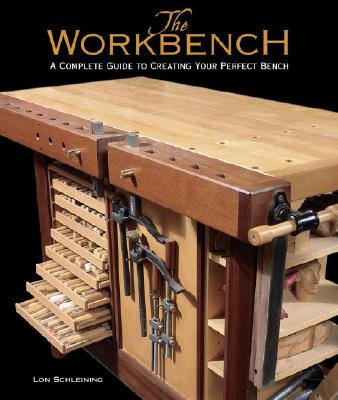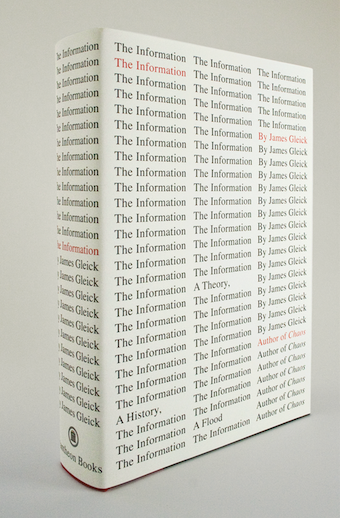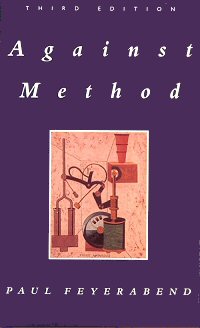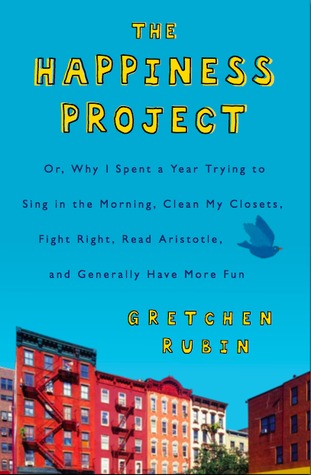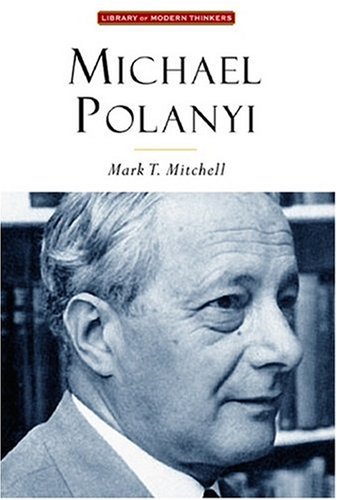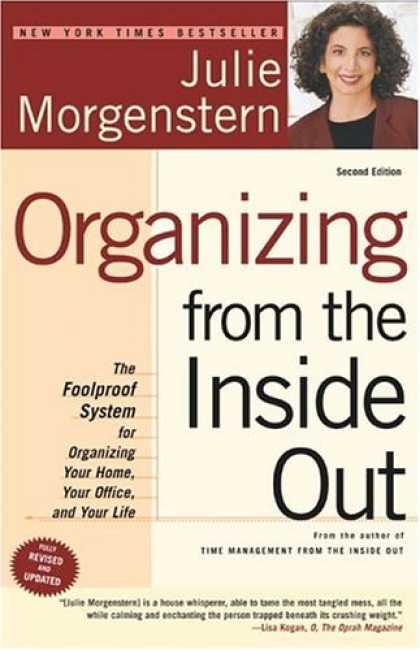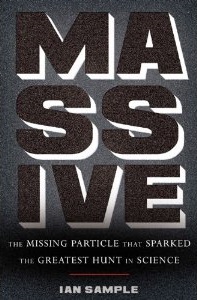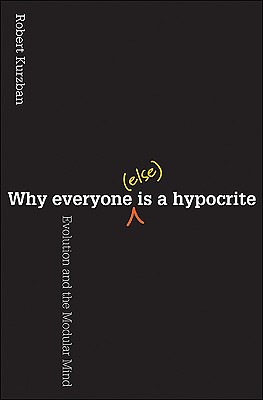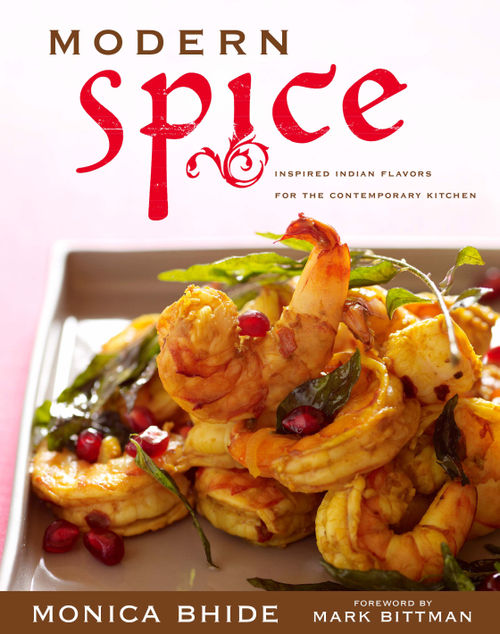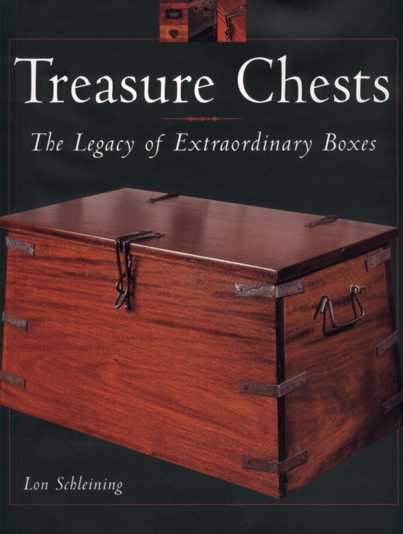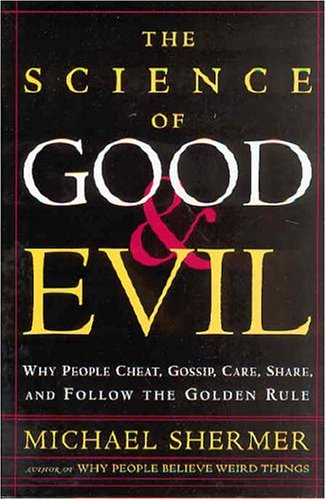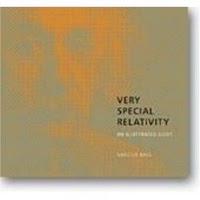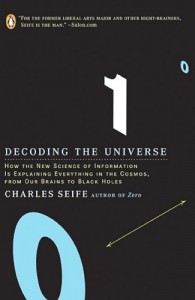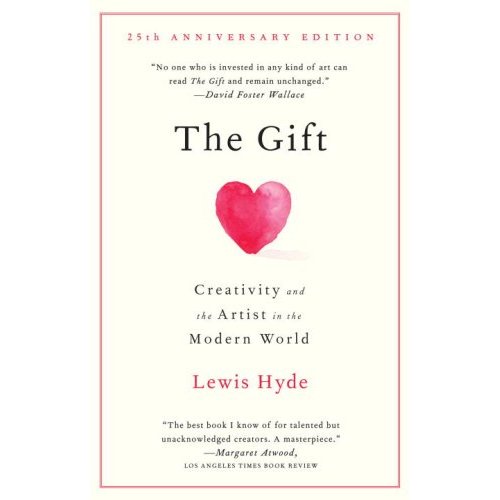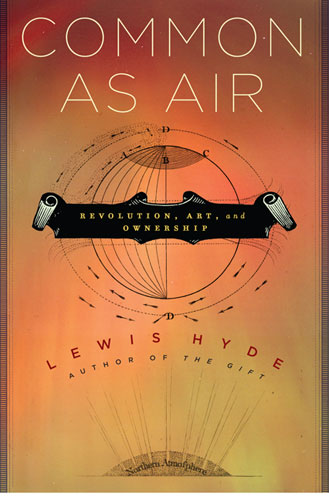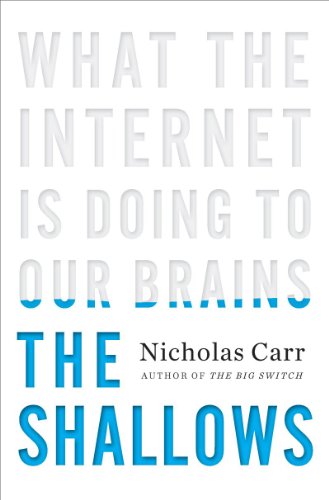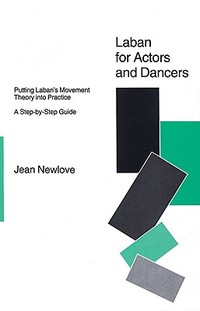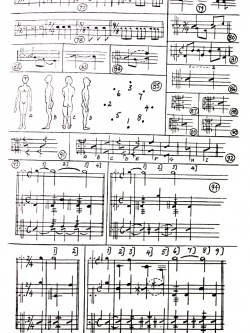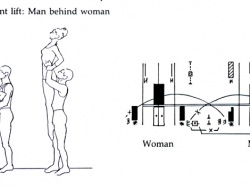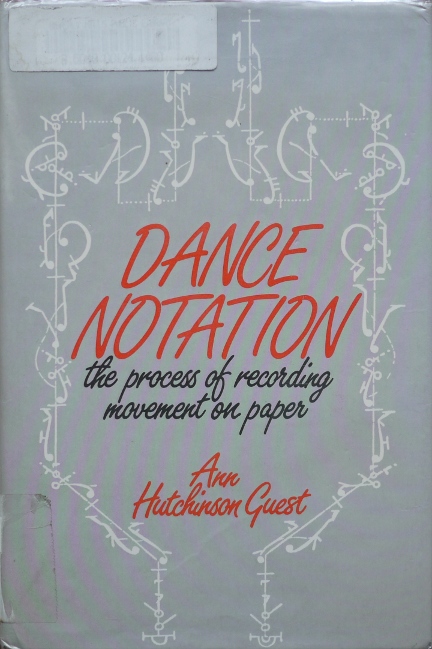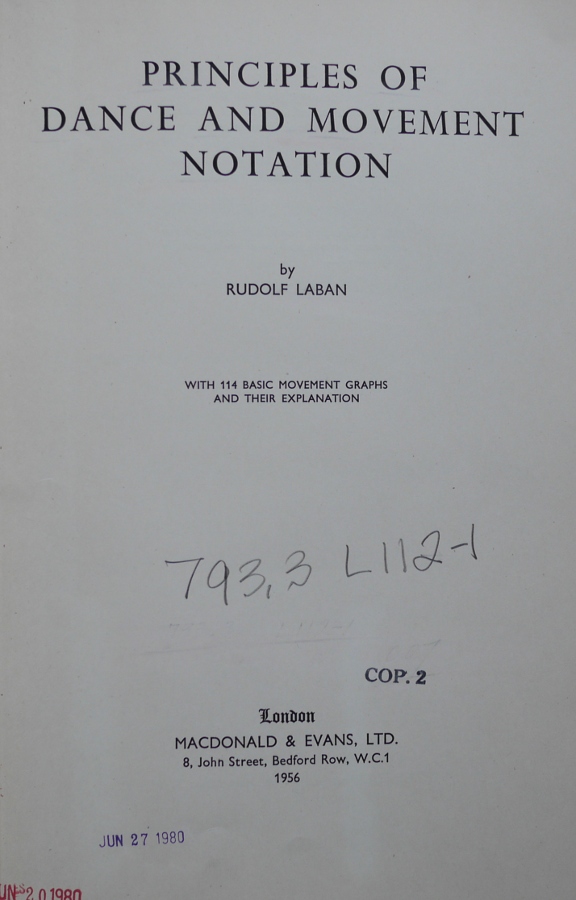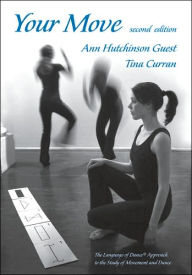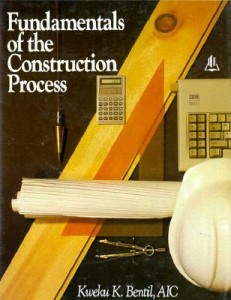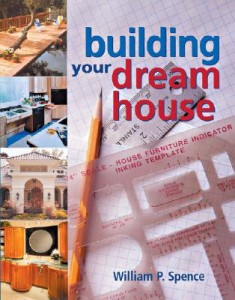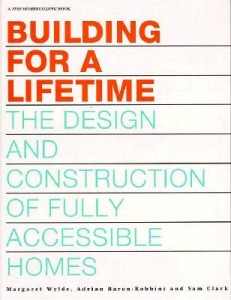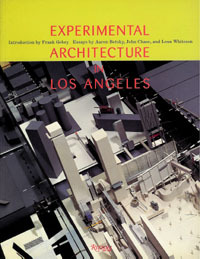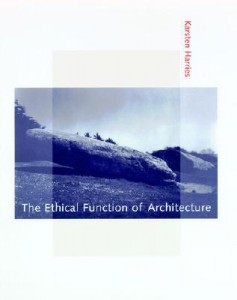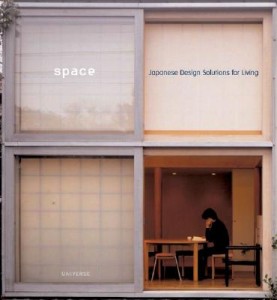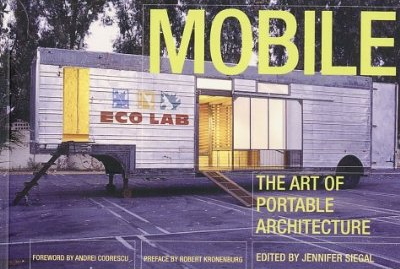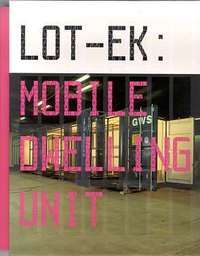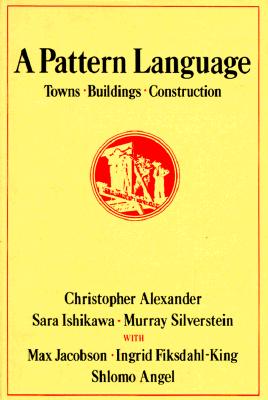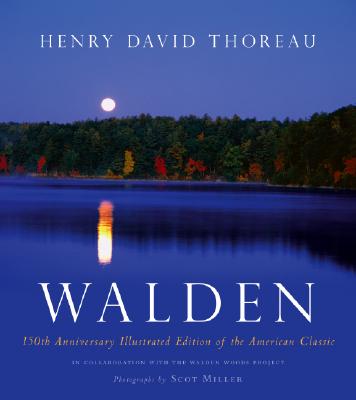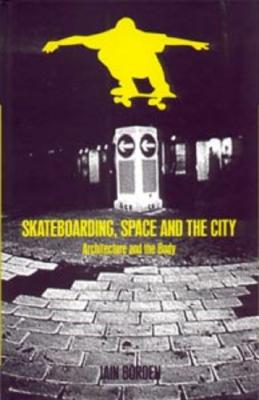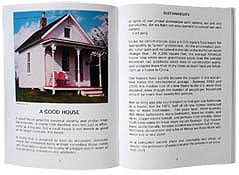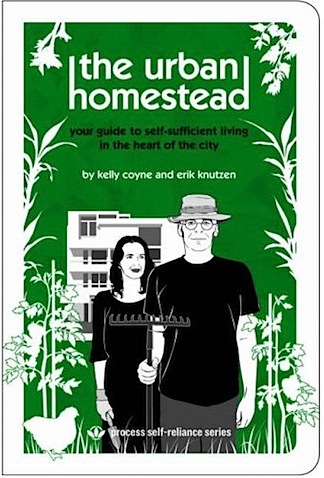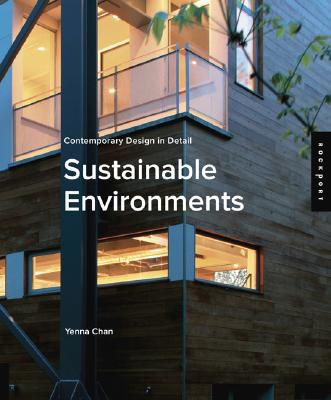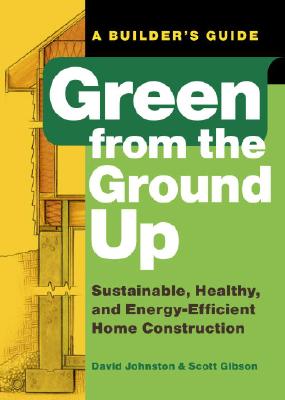[Originally posted at OnEnsemble.org]
Update
I checked out these books early in my home-design phase. All my philosophizing in the original post about how to build a home without exacerbating my privilege in society was made moot by my mother's purchase of a triplex in Torrance. Suddenly my privilege skyrocketed as the "son of the owner" and now defacto manager. Hiro and I kicked out one of the tenants to make space for ourselves (though in our defense we helped them find a new apartment closer to their work). Hiro and I pay rent, but we have the privilege of fixing up the place however we please, plus all the power that comes with being manager.
These aspects of privilege make me uncomfortable, but they are partially balanced by the more humble apartment life we've adopted. When I checked out the books reviewed below, Hiro and I planned to build the dream home, with advanced construction techniques and adventurous design. Instead we moved into an old apartment with shag carpet, broken windows, and mildew-stained tile, and we're spending our own money and working ourselves to fix it up. This feels great.
Original post
As design work continues on the mobile home, I've recently read a number of books regarding architecture. I have tried to limit myself to information that can be had freely online and from books that can be borrowed from the library. What follows are a few thoughts on the ethics of building a home, and a review of the books and publications I've read thus far.
I'm very sensitive to issues of privilege and economic inequality. I have been, without a doubt, incredibly fortunate. Despite my attempts to mitigate this advantage, I'm the poster-boy for privilege: white, male, American, with a happy childhood, an amazing partner, and dashing good looks. :) I can't give my supportive parents to a more needy kid, or give my health to someone sick. The best I've been able to do are little things, silly things, like wearing simple clothes (the t-shirt is the quintessential everyman's clothing), using Free Software (where edification is not dependent on wealth), taking the bus, riding my bike, eating vegetables. These things keep me removed from the upper eschelon of elitest culture, but they are ultimately ineffectual in lessening privilege; I've still got it better than everyone.
I worry about this a lot.
And designing and building a home greatly exacerbates the problem. I will graduate into the next level of comfort and security, a level that most of the world's people do not have. A mobile home might be less consumptive than a McMansion, but regardless, this project is steeped in self-satisfaction. I'm spending hours and hours and significant funds designing and building something that is exclusionary -- the walls enclose "my space" from "others' space" -- and this home project runs the risk of being selfish.
So we've made a few goals for this project. First we will try to minimize the negative impact of the project on others by using recycled and environmentally-friendly materials. We will maximize the possibility that others can benefit from the design and concepts in their own projects by favoring readily-available materials and construction techniques. We will try and build a home that is less-expensive, requires fewer resources, and can be built with one's own hands, with the hope that such a design might make home ownership a possibility for more people.
Toward these ends, the most fundamental requirement is sharing knowledge. The intellectual aspects of the project, the design of this home specifically as well as the underlying information resources, should be available to as many people as possible. So rather than buying books, I will try to find my information at the library. When I find gems of information relevant to building one's own mobile home, I will make them available here.
What follows is a series of book reviews. Each review contains a summary and an Applicability/Interest score. A score of 0 is for books that have absolutely no relevance to the project, and 10 for the (non-existant) perfect source of DIY mobile home information. A score or 4 or higher constitutes a recommendation to check out and read the book. Each review also includes "Things Learned", a place for me to list the personal revelations I had in reading the work. Last are "Good Quotes" for each book, with a (sometimes lengthy) list of favorite passages.
I will continue to add reviews here as I read. The Los Angeles Public Library is an incredible resource for information, and the "holds" system makes checking out books at your local branch remarkably convenient.
Contents
- Fundamentals of the Construction Process -- Checkout? Yes
- Building Your Dream House -- Checkout? No
- Building for a Lifetime -- Checkout? No
- Experimental Architecture in Los Angeles -- Checkout? No
- The Ethical Function of Architecture -- Checkout? Yes
- Space - Japanese Design Solutions for Compact Living -- Checkout? No
- Insulate and Weatherize -- Checkout? No
- Mobile - The Art of Portable Architecture -- Checkout? No
- LOT-EK: Mobile Dwelling Unit -- Checkout? Yes
- A Pattern Language -- Checkout? Yes
- Walden -- Checkout? Yes
- Skateboarding, Space and the City -- Checkout? No
- The Small House Book -- Buy? No, Borrow? Yes
- The Urban Homestead -- Buy? No. Borrow? No
- Sustainable Environments -- Checkout? No
- Green from the Ground Up -- Checkout? Yes
Title: Fundamentals of the Construction Process
Author: Kweku K. Bentil
Source: Los Angeles Public Library
Applicability/Interest: 4/10
Though a bit dated, this textbook would be a great read early-on in the design process. It is a wide-scope overview of the construction industry, the building process, and construction project management. With this wide scope, it necessarily glosses over many topics, but it has surprising detail in many areas and accomplishes its goal of giving the reader a basic understanding of the whole process and terminology of construction. It is written in a confident, clear tone that is easy to read.
Things Learned
I made copies of the Means Forms (for cost estimates) and the example Gantt chart Project Schedule.
Good Quotes
N/A
Title: Building Your Dream House
Author: William P. Spense
Source: Los Angeles Public Library
Applicability/Interest: 1/10
This is a totally uninspired book, with bland, dated photos and less-than-helpful text. It must be commissioned by the American Redwood Council or similar, with constant statements like, "The redwood siding... forms a pleasant, unified building", and "The beauty of the redwood siding blends this house into the surrounding water..."
Things Learned
N/A
Good Quotes
N/A
Title: Building for a Lifetime
Author: Margaret Wylde, Adrian Baron-Robbins, and Leon Whiteson
Source: Los Angeles Public Library
Applicability/Interest: 2/10
With the subtitle, "The Design and Construction of Fully Accessible Homes", this book is intended to serve as a guide to making homes that will satisfy users through all stages of life. While some of the suggestions are very good, it was hard for me to get excited about making major concessions to possible future disabilities. One of the major suggestions is to minimize stairs, for example, but they are a key element of the dream home. Probably because I'm not particularly inspired by the subject, the book was a little hard to get through.
Things Learned
We should install push-button or rocker light switches and D-pull or lever door knobs so that we won't have to replace them later in life.
Outdoor solar ground lighting might be a good solution in the trailer park, where we can't install wiring runs to lights.
We definitely want a two-story home, so it might be worthwhile to consider the future location for an elevator.
The sink and counter heights might need adjustment in the future if one of us were to be in a wheelchair.
Good Quotes
N/A
Title: Experimental Architecture in Los Angeles
Author: Intro by Frank Gehry, essays by Aaron Betsky, John Chase, and Leon Whiteson
Source: Los Angeles Public Library
Applicability/Interest: 2/10
The essays were an interesting insight into Los Angeles architecture, at least as it was when the book was published in 1991. The great bonus surprise was that the cover design and a section of the book is on Central Office of Architecture, Ron Golan's previous firm! (Ron Golan is working on the DIY trailer home with me.)
Things Learned
There is a long tradition of innovation in Los Angeles residential architecture.
Ron is great! One of the designs featured in the book is of a restaurant buffered from the busy street by a huge metal screen, billboard-like, in front of it. The screen is wonderfully artistic to me. It has the feel of a billboard in material and shape but it is semi-transparent and useful in an architectural sense, protecting the building from traffic and providing shade. It even serves the purpose of a billboard, with the restaurant's name in the lower right corner, but without the gaudy offense of a normal billboard. It's a uniquely Los Angeles architectural statement.
Good Quotes
From Frank Gehry: "But I'm troubled by the disturbing impulse among the establishment to rebuild Rome, to create a polite, almost classical order the people in power feel is the mark of a true city. This wrong-headed impulse has made us miss several fundamental opportunities, such as the chance to build upon the kind of Wilshire Boulevard-type linear downtown Los Angeles pioneered in the 1930s. Instead, we've created, in central LA, a belated and mediocre copy of Manhattan or Dallas that has helped foul up our transportation system."
From Aaron Betsky: "Los Angeles lacks a clear civic architecture. Its government is housed in buildings indistinguishable from the surrounding office buildings, its cultural institutions are broken apart into fragmented, almost invisible, pavilions. The so-called civic center of downtown Los Angeles has only one true focal point -- city hall. This modest skyscraper, however, is not at the end of any clear axis, but sits outside of the major thrust of development and is dwarfed by surrounding boxes created in the 1950s to house bureaucracies."
From Leon Whiteson: "This extreme social imbalance between its private and public realms has long had a profound effect upon the character and range of architecture that characterizes Los Angeles. Put simply, Los Angeles' residential architecture is as remarkable as its public architecture, both civic and commercial, is generally dull and trashy."
Title: The Ethical Function of Architecture
Author: Karsten Harries
Source: Los Angeles Public Library
Applicability/Interest: 4/10
Dozens of wonderfully thought-provoking concepts are buried here for the diligent explorer. The writing swings wildly between pointed, direct prose, and dense, academic language. The book opens with, "For some time now architecture has been uncertain of its way." A beautiful beginning! A few sentences later, "One might also point to Charles Perrault's distinction between positive and arbitrary beauty, the latter a matter of taste, dependent on ornament and changing fashion and 'the architect's special province,' a distinction that invites us to understand the architect as 'the artist who applies an ornamental dress of various kinds to the immutable substance of architecture,' invites the 'love affair with alternate visual conventions' that has made post-Enlightenment architecture both more interesting and more arbitrary." Whew. For the most part, I give Harries the benefit of the doubt; she's dealing with complicated concepts, so her language is necessarily complex. But my sympathy only carried me through the first 50 pages of reading every word diligently, re-reading passages and referring back until I got it. I hate to admit it, but after 50 pages, I read the opening and closing paragraphs of each section (usually about 5 per chapter, 24 chapters total), and random spots inbetween. And although I fear my skimming is a disservice to the intricasies of the book, it was a freeing, delightful way to read.
Almost every chapter section has some question from the author, or quote from an architect that is enlightening. For me, this book was almost as thought-provoking as A Pattern Language.
The major drawback to my selfish skipping through the book was that I sometimes lost Harries' narrative. Reading bits out of context, I couldn't always tell if Harries was explaining a concept in the process of proving or refuting it. My apologies to Harries!
Things Learned
I had one revelation that made the book extremely worthwhile: the mobile home needs to be built with the trailer park in mind. It needs to be conscious of what community means in the trailer park and it needs to be a contribution to this community. Thus far I've been thinking of the trailer park as a necessary evil -- the only place I might be able to put the dream home for the time being. But that's not the way I want to be in this world. I don't want to take advantage of the trailer park and I don't want my home to look down on other homes around it.
I came away fairly confident about my overall approach to this home; basically to design something exactly in line with who Hiro and I are, and how we want to be in the world. When the book describes a "problem" or "failing" with a particular school of thought (in the first quote below, for example) I was often relieved to feel like my belief system provided my own solution, even if I don't know what to call it. I feel good to design around me, and try and figure out later what architectural terms to use to describe it.
Good Quotes
"Archtectural postmodernism thus represents, in Jahn's words, 'a realization and a response to the failures of modernism. Architecture, along the principles of functionalism, programmatic determinism, and technological expressionism, produced buildings without connection to site, place, the human being, and history.'"
"To be sure, we can appeal to what seem to be obvious needs generated by our way of life and can look to scientists, especially to social scientists, to state these needs with a precision that would allow engineers to offer the solutions that would best meet them. But are these needs so obvious? Do we know how to circumscribe the field of our needs? Such circumscription demands a sound understanding of the requirements of human dwelling; without it, there is only stuttering dissatisfaction with all purely functional building."
"Our dwelling is always a dwelling with others. The problem of architecture is therefore inevitably also the problem of community, which is only the other side of the problem of the individual."
Frank Stella: "I always get into arguments with people who want to retain the old values in painting, the humanistic values that they always find on the canvas. If you pin them down, they always end up asserting that there is something there besides the paint on the canvas. My painting is based on the fact that only what can be seen is there. It really is an object... All I want anyone to get out of my paintings, and all that I ever get out of them, is the fact that you can see the whole idea without confusion... What you see is what you see."
"...to the extent that we measure works of architecture by the aesthetic conception of a successful artwork, architecture has to be considered deficient and impure, a not quite respectable art -- not quite respectable precisely because never truly autonomous, always bound to the requirements of building."
"Loos linked the replacement of ornament with 'art for art's sake' to the progressive inversion that characterizes modernity. If he is right, then, like clothing, housing today has lost much of its former social function: those truly of the twentieth century no longer dress or build to represent themselves and their place in society to the world."
"We meet here not so much with a demand for decoration as with a refusal of what is experienced as the muteness of modern architecture, with a longing for architecture as text, for buildings carrying messages that can be read in some sense, for a new architecture parlante."
"How can a building, a material thing in space and time, signify an ideal, invisible community? The Middle Ages found hints of an answer to this question in the traditional conception of the faithful as dwelling with God in an ideal city: the City of God."
"I offered the example of a bracelet, whose point is not so much to be appreciated as a self-sufficient beauty in its own right as to re-present the arm it circles -- beauty here as a re-presentational function in a very obvious sense. Similarly the point of architectural ornament is not to be appreciated as a self-sufficient beauty but to re-present the ornament bearer. Denied its re-presentational function, ornament turns into arbitrary decoration."
"Consider today's mobile homes. We may deplore the still-continuing proliferation of such homes, but, as a guide to mobile, modular, and prefabricated homes points out, they do indeed offer what is demanded: 'Basic shelter at modst cost'... This suggests that what distinguishes more traditional homes from mobile homes are really just frills, ornament easily dispensed with. What a house provides is basic shelter. But what kind of dwelling do such homes reduced to basic shelter provide?"
"That mobile homes fail to meet the requirements of dwelling is suggested by the already-mentioned ways in which those who have chosen to buy a mobile home, most often no doubt because it does provide 'basic shelter at modest cost', appropriate and transform such a home to make it look like a real house, for example by using 'a tip-out, slide-out, or tag unit which will break up the boxlike appearance of the unit while adding additional space. More help would come from adding a porch, patio, deck, trellis, or anything that visually ties the mobile home to its site'."
"When considering building 'as giving shape to the functions of life,' we have to keep in mind that our life in the world is essentially a life with others. Whatever we build inevitably has a social significance."
From Le Corbuseir: "There is no such thing as primitive man; there are primitive resources. The idea is constant, in full sway from the beginning."
From Heidegger: "Only if we are capable of dwelling, only then can we build."
"The lure of freedom that challenges the binding power of place is as old as humanity. The story of the Fall, an ambiguous story of both place and self-assertion, provides a paradigm for stories of human beings refusing to keep their assigned place, stories that are inevitably also stories of liberation."
"The full consequences of this attack on distance (by the modern metropolis) remain uncertain. It seems difficult not to welcome the way it has helped free human beings from what I have called the accident of location: no longer is place destiny. Such liberation, however, is attended by its frightening shadow: the attack on distance also threatens us with a homelessness nefver before known."
"The ease with which we relocate ourselves and replace buildings is witness to a more profound displacement that may be welcomed as an aspect of humanity's coming of age or deplored as a loss of genuine dwelling."
"Genuine dwelling means not so much a being at home but at most a continuous journeying home, a continuous homecoming, haunted by changing dreams of home."
"Le Corbusier recognizes this. As emphatically as Ruskin, he denies that architecture can ever be reduced to the level of the machine. Architecture, he insists, goes beyond 'utilitarian needs'. Functional considerations only provide certain constraints. It is with these that the architect must begin, but the genuine architect will not stop there: 'Contour and profile are the touchstone of the architect.'"
From Bernard Rudofsky: "There is a good deal of irony in the fact that to stave off physical and mental deterioration the urban dweller periodically escapes his splendidly appointed lair to seek bliss in what he thinks are primitive surroundings: a cabin, a tent..."
"The need for art, and especially for architecture, remains. What kind of architecture? Temple and cathedral lie behind us. Not only has the kind of community their building presupposed and reaffirmed been lost, but few of us would wish it to return, for it is incompatible with one of our own ruling myths: the myth of the value of personal freedom. That myth has freed art, too, from its former servitude to religion and state. But if art has thus gained a new freedom, the price of such emancipation has been its peripheral placement in a world ruled by the economic imperative. Where does that leave building? Outside of art, it would seem, which has become 'a private concern of the artist'. Where does that leave architecture?"
Title: Space - Japanese Design Solutions for Compact Living
Author: Michael Freeman
Source: Los Angeles Public Library
Applicability/Interest: 3/10
This book suffered from unfortunate timing and overly high expectations. It was the first thing I read after finishing a few books on writing style and grace. The writing of Space is clunky and awkward. As a sample, the opening sentence is, "Our endless preoccupation with space -- which is to say living space -- is an acknowledgment of its role in our well-being." It's certainly not awful, but I came away still yearning for the book on small living with equally compact prose.
The book's strength is its photographs, which are loosely organized into sections, "enjoy", "maximize", "compress", "open", and "conceal". Although the book's title and these sections conspire to suggest over-arching themes to the concepts, the organization of the photos feels more haphazard at times. The 'solutions' are never clearly stated or explored. I was hoping for an exploration of specifics like "shelves", or even "storage", but the book often feels like a collection of photos of modern homes that happen to be small. The "conceal" section was strongest, with a wonderful stairway that rolls sideways to disappear into the wall.
Generally, though, many of the homes seem to contain significant wasted space and emphasize a design aesthetic over livability.
Things Learned
Steep stairs don't draw me in. I usually run up stairs two at a time, but steep stairs and ladders force the feet to follow every step. They're authoritarian.
The houses in the book are made or broken by natural light.
Why are exposed metal beams always painted red? I like it, but perhaps there's another color?
I like drawers tucked into the toe-kicks of stairs.
Good Quotes
N/A
Title: Insulate and Weatherize
Author: Bruce Harley
Source: Los Angeles Public Library
Applicability/Interest: 2/10
This was a frustrating read. In retrospect, my expectations were probably misguided, but I spent the whole book waiting for applicable topics. While I had hoped for detailed cross sections on SIP panels and housewrap comparisons, the bulk of the book deals with upgrading existing homes. Very few of the materials and techniques apply to mobile home construction. The book makes recommendations for hot/humid climates, and cold climates, leaving Californians to guess at suitability. The entire book read like a long introduction, never getting to the "meat" of the topic.
Things Learned
Even small holes in the thermal envelope can significantly reduce efficiency. If there is any pressure difference between inside and outside, air will be forced through even tiny gaps.
Perhaps I should consider blinds or shutters that will help insulate the windows at night.
If the home requires heating and cooling, is a heat-pump an option?
Good Quotes
"Every bathroom should have an exhaust fan of at least 50cfm. Range hoods rated for at least 250cfm are also highly recommended, but they are not usually required by code."
"One advantage of a through-wall fan is that you don't need to install ductwork (with its associated drop in airflow). This model, the Preventilator from Tamarack Technologies, has a motorized cover that seals tightly when it's turned off. Both Fantech and Panasonic also make through-wall fans."
"I think that fans with sone ratings of greater than 1.5 are too noisy for this application (bathroom ventilation); if you can, choose a fan rated at 1.0 or less."
"A fan delay timer switch (National Controls Corp, Airetrak, Aube) turns on a bath fan when you switch it on, but when you switch it off, the fan runs for a preset time that can be adjusted from 1 to 60 minutes. A windup timer is simpler in construction (but less automatic in operation)."
"When foaming around a new window, be sure to use a light touch, or you'll end up with problems. The window opening shown above was sealed with low-expanding foam, but the space was so large that the foam distorted the window frame as it cured. This window probably wont open without some remedial work."
"For years, passive solar and energy-efficiency guides have advocated the use of movable insulation to reduce nighttime heat loss. Effective when used properly, movable insulation saves energy -- but at the price of human energy. Insulation also cools the glass, so it must fit snugly; if indoor air touches the cold glass, condensation can result."
"Air source heat pumps, popular in some parts of the country, are basically air conditioners that can work in reverse to deliver heat into the house in winter. Heat pumps provide heating and cooling in one machine, with one duct system, and no combustion."
"One of the thorniest problems in hot water efficiency is the waste of all the heat in the water that goes down the drain. One product on the market, the Gravity Film Exchange (GFX) system, can recover up to 60% of that heat."
Title: Mobile - The Art of Portable Architecture
Author: Edited by Jennifer Siegal
Source: Los Angeles Public Library
Applicability/Interest: 3/10
Not so much that applies to my project but I'm excited to know that the architect and book's editor, Jennifer Siegal, lives right here in Los Angeles. I enjoyed the section on the LOT/EK Mobile Dwelling Unit, though I'm torn about the "slide-out" concept. It makes a lot of sense to open up room in the trailer, but might be overly complex for a trailer that only moves occasionally and emphasizes long-lasting and weather-tight construction.
Things learned
Even particleboard can be visually pleasing. I don't like inflatable structures and exaggerated curves; I like the efficiency of straight lines.
Good quotes
From Andrei Codrescu's foreword: "But while stationary, most new American houses are impermanent. Although a house in a subdivision is not portable, it is certainly interchangeable with any other house in any other subdivision -- and the subdivisions themselves often evaporate. This evaporation is sometimes brought about by company relocations, or by the city moving closer to what was once almost country. Quite often, suburbs become the abodes of new immigrants who have come to America in search of stability, after leaving behind old houses that will long outlive their new homes. The house in Sibiu, Romania, where I was born, was built in the seventeenth century and still stands. Nearly every American house I've lived in has long been demolished to make room for some other building. There is a delicious (though painful) paradox here: Americans long for stability, but all they get is stationary impermanence. No wonder, then, that many of us long to become permanent nomads, snails with houses on our backs, Touareg tribesman, and Gypsies."
From Jennifer Siegels' intro "The age of new nomadism": "(The trailers') anonymity, disregard for regional contextualism, and inability to work with the contours of the natural landscape force the mobile dwelling to remain on the periphery of environmental design discourse, making the argument for its acceptance arduous."
Title: LOT-EK - Mobile Dwelling Unit
Author: Curated by Christopher Scoates
Source: Los Angeles Public Library
Applicability/Interest: 7/10
Very interesting read about LOT-EK's design of a shipping-container-based dwelling. Theirs isn't necessarily my favorite shipping-container home, but they make a good case for slide-outs. I'm still not convinced that it can be done in an efficient way that will last.
Things learned
The use of shipping containers for housing is delightfully subversive, inverting American consumerism.
I'm not interested in the installation-art side of architecture; many of the prototypes lack real-world, satisfying solutions of keeping out the weather or minimizing waste.
The mobile home project we are working on is much harder than most projects because it's meant to last, it's meant to be our only home, it deals with transportation and land use law, and we care about environmental impact.
Good quotes
From Aaron Betsky's article: "Thus, two strands emerged in modern architecture's approach to technology. While some architects continued to see their work as part of the construction of a new world on a vast scale and in tandem with engineers, others looked more toward the integration of architecture into the daily practice of modernization. Futurist and Constructivist architects dreamed of whole mountain ranges of concrete, proposed airports in the middle of cities, and drew their projects as vast abstractions whose elongated forms took little note of the small specks that were human beings meant to huddle inside these behemoths. At the Bauhaus, meanwhile, architects were trying to use new techniques of bending metal, plywood, and synthetics to create forms that would conform to the human body. They were using radiators and bare light bulbs without covering them up, so that users could understand and possibly even fix these implements of comfort. They employed scientific techniques such as motion study and statistics to create efficient spaces that would minimize human action. Instead of glorifying the new as larger than man, they tried to make novelty accessible and useful."
Also from Aaron Betsky's article: "Finally, we can also see LOT-EK's work in relation to the wider acceptance of the world of motion and distribution in the world of architecture. Once the computer had reduced information and imagery to interchangeable bits, the designer was free to treat all data as equal and build up forms from these abstract elements. The same computer can produce a car and a building, and more and more we demand the same access to technology in those formerly disparate objects. The container became the symbol for the 'dumb box' to which the miniaturization endemic to digital technologies reduced buildings, cars, and the computer itself. Not final form, but the collection of information, its organization, and its (temporary) storage became the tasks of the architect."
Title: A Pattern Language
Author: Christopher Alexander, Sara Ishikawa, Murray Silverstein
Source: Los Angeles Public Library
Applicability/Interest: 8/10
This extremely ambitious work attempts to explore the full range of architecture's problems and solutions. Particular problems and their solutions are presented as "patterns", and there are 250 or so in total. The authors start at the "Region" level, move to the "City" and "Community" levels, and finally discuss particulars of individual spaces like doorways, counters, and couches. I would very strongly recommend this book to anyone designing their own home, once they have a rough design in mind. It was very interesting for me to consider each pattern in relation to my current design.
Things learned
I want to think more about how this semi-nomadic home fits into American culture. I should treat legal challenges (like zoning laws which would ban such a small home) as opportunities to try and make a difference. I like my tendency to try and make spaces useful in multiple ways (containing multiple patterns).
Good quotes (the book is over 1100 pages so there are a lot of quotes)
"It is possible to make buildings by stringing together patterns, in a rather loose way. A building made like this, is an assembly of patterns. It is not dense. It is not profound. But it is also possible to put patterns together in such a way that many many patterns overlap in the same physical space: the building is very dense; it has many meanings captured in a small space; and through this density, it becomes profound."
"We do not believe that these large patterns, which give so much structure to a town or of a neighborhood, can be created by centralized authority, or by laws, or by master plans. We believe instead that they can emerge gradually and organically, almost of their own accord, if every act of building, large or small, takes on the responsibility for gradually shaping its small corner of the world to make these larger patterns appear there."
"An overconcentrated population, in space, puts a huge burden on the region's overall ecosystem. As the big cities grow, the population movement overburdens these areas with air pollution, strangled transportation, water shortages, housing shortages, and living densities which go beyond the realm of human reasonableness. In some metropolitan centers, the ecology is perilously close to cracking. By contrast, a population that is spread more evenly over its region minimizes its impact on the ecology of the environment, and finds that it can take care of itself and the land more prudently, with less waste and more humanity: 'This is because the actual urban superstructure required per inhabitant goes up radically as the size of the town increases beyond a certain point. For example, the per capita cost of high rise flats is much greater than that of ordinary houses; and the cost of roads and other transportation routes increases with the number of commuters carried. Similarly, the per capita expenditure on other facilities such as those for distributing food and removing wastes is much higher in cities than in small towns and villages. Thus, if everybody lived in villages the need for sewage treatment plants would be somewhat reduced, while in an entirely urban society they are essential, and the cost of treatment is high. Broadly speaking, it is only by decentralization that we can increase self-sufficiency -- and self-sufficiency is vital if we are to minimize the burden of social systems on the ecosystems that support them.'"
"The artificial separation of houses and work creates intolerable rifts in people's inner lives."
"The fact that cars are large is, in the end, the most serious aspect of a transportation system based on the use of cars, since it is inherent in the very nature of cars. Let us state this problem in its most pungent form. A man occupies about 5 square feet when he is standing still, and perhaps 10 square feet when he is walking. A car occupies about 350 square feet when it is standing still (if we include access), and at 30 miles an hour, when cars are 3 car lengths apart, it occupies about 1000 square feet. As we know, most of the time cars have a single occupant. This means that when people use cars, each person occupies almost 100 times as much space as he does when he is a pedestrian... people are 10 times as far apart. In other words, the use of cars has the overall effect of spreading people out, and keeping them apart."
"In downtown Los Angeles over 60 percent of the land is given over to the automobile."
"People will not feel comfortable in their houses unless a group of houses forms a cluster, with the public land between them jointly owned by all the householders. When houses are arranged on streets, and the streets are owned by the town, there is no way in which the land immediately outside the houses can reflect the needs of families and individuals living in those houses."
"It is true that the large supermarkets do have a great variety of foods. But this 'variety' is still centrally purchased, centrally warehoused, and still has the staleness of mass merchandise. In addition, there is no human contact left, only rows of shelves and then a harried encounter with the check-out man who takes your money."
"Except where traffic densities are very high or very low, lay out pedestrian paths at right angles to roads, not along them, so that the paths gradually begin to form a second network, distinct from the road system, and orthogonal to it."
"People need green open spaces to go to; when they are close they use them. But if the greens are more than three minutes away, the distance overwhelms the need."
"But in a society with cars and trucks, the common land which can play an effective social role in knitting people together no longer happens automatically. Those streets which carry cars and trucks at more than crawling speeds, definitely do not function as common land... In such a situation, common land must be provided, separately, and with deliberation, as a social necessity, as vital as the streets."
"Indeed, it is very clear that all those processes which encourage speculation in land, for the sake of profit, are unhealthy and destructive, because they invite people to treat houses as commodities, to build things for 'resale', and not in such a way as to fit their own needs."
"For any given site, do not let the ground area covered by buildings exceed 50 per cent of the site."
"Buildings must always be built on those parts of the land which are in the worst condition, not the best."
"In order to ensure that both the kitchen and formal living room are conveniently located with respect to cars and that each space maintains its integrity in terms of use and privacy, there must be one and only one primary entrance into the house, and the kitchen and living room must be both directly accessible from this entrance."
"The roof plays a primal role in our lives. The most primitive buildings are nothing but a roof. If the roof is hidden, if its presence cannot be felt around the building, or if it cannot be used, then people will lack a fundamental sense of shelter."
"A vast part of the earth's surface, in a town, consists of roofs. Couple this with the fact that the total area of a town which can be exposed to the sun is finite, and you will realize that it is natural, and indeed essential, to make roofs which take advantage of the sun and air."
"Place the main stair in a key position, central and visible... Arrange it so that the stair and the room are one, with the stair coming down around one or two walls of the room. Flare out the bottom of the stair... so that people below will naturally use the stair for seats."
"If there is a beautiful view, don't spoil it by building huge windows that gape incessantly at it. Instead, put the windows which look onto the view at places of transition -- along paths, in hallways, in entry ways, on stairs, between rooms. If the window is correctly placed, people will see a glimpse of the distant view as they come up to the window or pass it: but the view is never visible from the places where people stay."
"Create alternating areas of light and dark throughout the building, in such a way that people naturally walk toward the light, whenever they are going to important places:seats, entrances, stairs, passages, places of special beauty, and make other areas darker, to increase the contrast."
"Give those parts of the house where people sleep, an eastern orientation, so that they wake up with the sun and light."
"... the home workshop becomes far more than a basement or a garage hobby shop. It becomes an integral part of every house; as central to the house's function as the kitchen or the bedrooms. And we believe its most important characteristic is its relationship to the public street."
"Internal staircases reduce the connection between upper stories and the life of the street to such an extent that they can do enormous social damage."
"Make sure that you treat the edge of the building as a 'thing', a 'place', a zone with volume to it, not a line or interface which has no thickness. Crenelate the edge of buildings with places that invite people to stop."
"The street window provides a unique kind of connection between the life inside buildings and the street."
"Balconies and porches which are less than six feet deep are hardly ever used."
"A house feels isolated from the nature around it, unless its floors are interleaved directly with the earth that is around the house."
"In a healthy town every family can grow vegetables for itself. The time is past to think of this as a hobby for enthusiasts; it is a fundamental part of human life."
"In every room where you spend any length of time during the day, make at least one window into a 'window place'."
"To strike the balance between the kitchen which is too small, and the kitchen which is too spread out, place the stove, sink, and food storage and counter in such a way that: 1) No two of the four are more than 10 feet apart. 2) The total length of counter -- excluding sink, stove, and refrigerator -- is at least 12 feet. 3) No one section of the counter is less than 4 feet long."
"When (a space for storing clothes and dressing) is not provided, the whole bedroom is potentially the dressing room; and this can destroy its integrity as a room."
"As you work out the exact slope of your stair, bear in mind the relationship: riser + tread = 17.5 inches."
"Cover the walls with narrow shelves of varying depth but always shallow enough so that things can be placed on them one deep -- nothing hiding behind anything else."
"Build waist-high shelves around at least part of the main rooms where people live and work. Make them long, 9 to 15 inches deep, with shelves or cupboard underneath. Interrupt the shelf for seats, windows, and doors."
"Make a place in the house, perhaps only a few feet square, which is kept locked and secret; a place which is virtually impossible to discover -- until you have been shown where it is; a place where the archives of the house, or other more potent secrets, might be kept."
"A first principle of construction: on no account allow the engineering to dictate the building's form. Place the load bearing elements -- the columns and the walls and floors -- according to the social spaces of the building; never modify the social spaces to conform to the engineering structure of the building."
"Steel as a bulk material seems out of the question. We do not need it for high buildings since they do not make social sense -- Four Story Limit. And for smaller buildings it is expensive, impossible to modify, high energy in production."
"And, for any optimist who thinks he can go on using steel reinforcing bars forever -- consider the following fact. Even iron, abundant as it is all over the earth's surface, is a depletable resource. If consumption keeps growing at its present rate (1977?) of increase (as it very well may, given the vast parts of the world not yet using resources at American and western consumption levels), the resources of iron will run out in 2050."
"(A) novice-like and panic-stricken attention to detail has two very serious results. First, like the novice, the architects spend a great deal of time trying to work things out ahead of time, not smoothly building. Obviously, this costs money; and helps create these machine-like 'perfect' buildings. Second, a vastly more serious consequence: the details control the whole. The beauty and subtlety of the plan in which patterns have held free sway over the design suddenly becomes tightened and destroyed because, in fear that details won't work out, the details of connections, and components, are allowed to control the plan. As a result, rooms get to be slightly the wrong shape, windows go out of position, spaces between doors and walls get altered just enough to make them useless. In a word, the whole character of modern architecture, namely the control of larger space by piddling details of construction, takes over."
"One of a window's most important functions is to put you in touch with the outdoors. If the sill is too high, it cuts you off."
"On upper stories, the sill height needs to be slightly higher. The sill still needs to be low to see the ground, but it is unsafe if it is too low. A sill height of about 20 inches allows you to see most of the ground, from a chair nearby, and still feel safe."
"Make the window frame a deep, splayed edge: about a foot wide and splayed at about 50 to 60 degrees to the plane of the window, so that the gentle gradient of daylight gives a smooth transition between the light of the window and the dark of the inner wall."
"Choose a natural way to cap the roof -- some way which is in keeping with the kind of construction, and the meaning of the building. The caps be structural; but their main function is decorative -- they mark the top -- they mark the place where the roof penetrates the sky."
"The practice of walking on a Persian rug with outdoor shoes on is a barbarian habit, never practiced by the people who make those rugs, and know how to treat them -- they always take their shoes off. But the modern nylon and acrylic rugs, machine-made for hard wear, lose all the sumptuousness and leisure of the carpet: they are, as it were, soft kinds of concrete. The problem cannot be solved. The conflict is fundamental. The problem can only be avoided by making a clear distinction in the house between those areas which have heavy traffic and so need hard wearing surfaces which are easy to clean, and those other areas which have only very light traffic, where people can take off their shoes, and where lush, soft, beautiful rugs, pillows, and tapestries can easily be spread."
"... choose a material that is easy to repair in little patches, inexpensively, so that little by little, the wall can be maintained in good condition indefinitely."
"Make every inside surface warm to the touch, soft enough to take small nails and tacks, and with a certain slight 'give' to the touch. Soft plaster is very good; textile hangings, cane work, weavings, also have this character. And wood is fine, where you can afford it."
"Decide which of the windows will be opening windows. Pick those which are easy to get to, and choose the ones which open onto flowers you want to smell, paths where you might want to talk, and natural breezes. Then put in side-hung casements that open outward. Here and there, go all the way and build full French windows."
"An opaque door makes sense in a vast house of palace, where every room is large enough to be a world unto itself; but in a small building, with small rooms, the opaque door is only very rarely useful."
"Divide each window into small panes. These panes can be very small indeed, and should hardly ever be more than a foot square. To get the exact size of the panes, divide the width and height of the window by the number of panes. Then each window will have different sized panes according to its height and width."
"Build a special bench outside the front door where people from inside can sit comfortably for hours on end and watch the world go by. Place the bench to define a half-private domain in front of the house. A low wall, planting, a tree, can help to create the same domain."
"Surround any natural outdoor area, and make minor boundaries between outdoor areas with low walls, about 16 inches high, and wide enough to sit on, at least 12 inches wide."
"Build canvas roofs and walls and awnings wherever there are spaces which need softer light or partial shade in summer, or partial protection from mist and dew in autumn and winter. Build them to fold away, with ropes or wires to pull them, so that they can easily be opened."
"On paths and terraces, lay paving stones with a 1 inch crack between the stones, so that grass and mosses and small flowers can grow between the stones. Lay the stones directly into earth, not into mortar, and, of course, use no cement or mortar in between the stones."
"Most generally of all, the thing that makes the difference in the use of ornament is the eye for the significant gap in the continuum: the place where the continuous fabric of interlock and connectivity is broken. When ornament is applied badly it is always put into someplace where these connections are not really missing, so it is superfluous, frivolous. When it is well used, it is always applied in a place where there is a genuine gap, a need for a little more structure, a need for what we may call metaphorically 'some extra binding energy', to knit the stuff together where it is too much apart."
"Place the lights low, and apart, to form individual pools of light which encompass chairs and tables like bubbles to reinforce the social character of the spaces which they form. Remember that you can't have pools of light without the darker places in between."
"It is far more fascinating to come into a room which is the living expression of a person, or a group of people, so that you can see their lives, their histories, their inclinations, displayed in manifest form around the walls, in the furniture, on the shelves. Beside such experience -- and it is as ordinary as the grass -- the artificial scene-making of 'modern decor' is totally bankrupt."
Title: Walden
Author: Henry David Thoreau
Source: Los Angeles Public Library (also available online here)
Applicability/Interest: 4/10
It was a delight to read this literary classic with the dream home in mind.
Things learned
I've got Thoreau to back me up on loving simple clothes.
Good quotes
"Think, also, of the ladies of the land weaving toilet cushions against the last day, not to betray too green an interest in their fates! As if you could kill time without injuring eternity."
"One farmer says to me, 'You cannot live on vegetable food solely, for it furnishes nothing to make bones with'; and so he religiously devotes a part of his day to supplying his system with the raw material of hones; walking all the while he talks behind his oxen, which, with vegetable-made bones, jerks him and his lumbering plow along in spite of every obstacle. Some things are really necessaries of life in some circles, the most helpless and diseased, which in others are luxuries merely, and in others still are entirely unknown."
"Not long since, a strolling Indian went to sell baskets at the house of a well-known lawyer in my neighborhood. 'Do you wish to buy any baskets?' he asked. 'No, we do not want any,' was the reply. 'What!' exclaimed the Indian as he went out the gate, 'do you mean to starve us?' Having seen his industrious white neighbors so well off -- that the lawyer had only to weave arguments, and, by some magic,wealth and standing followed -- he had said to himself: I will go into business; I will weave baskets; it is a thing which I can do. Thinking that when he had made the baskets he would have done his part, and then it would be the white man's to buy them. He had not discovered that it was necessary for him to make it worth the other's while to buy them, or at least make him think that it was so, or to make something else which it would be worth his while to buy. I too had woven a kind of basket of a delicate texture, but I had not made it worth any one's while to buy them. Yet not the less, in my case, did I think it worth my while to weave them, and instead of studying how to make it worth men's while to buy my baskets, I studied rather how to avoid the necessity of selling them. The life which men praise and regard as successful is but one kind. Why should we exaggerate any one kind at the expense of the others?"
"I cannot believe that our factory system is the best mode by which men may get clothing. The condition of the operatives is becoming every day more like that of the English; and it cannot be wondered at, since, as far as I have heard or observed, the principle object is, not that mankind may be well and honestly clad, but, unquestionably, that the corporations may be enriched. In the long run men hit only what they aim at. Therefore, though they should fail immediately, they had better aim at something high."
"In the savage state every family owns a shelter as good as the best, and sufficient or its coarser and simpler wants; but I think that I speak within bounds when I say that, though the birds have their nests, and the foxes their holes, and the savages their wigwams, in modern civilized society not more than one half the families own a shelter. In the large towns and cities, where civilization especially prevails, the number of those who own a shelter is a very small fraction of the whole. The rest pay an annual tax for this outside garment of all, become indispensable summer and winter, which would buy a village of Indian wigwams, but now helps to keep them poor as long as they live. I do not mean to insist here on the disadvantage of hiring compared with owning, but it is evident that the savage owns his shelter because it costs so little, while the civilized man hires his commonly because he cannot afford to own it; nor can he, in the long run, any better afford to hire. But, answers one, by merely paying this tax the poor civilized man secures an abode which is a palace compared with the savage's. An annual rent of from twenty-five to a hundred dollars (these are the country rates) entitles him to the benefits of centuries, spacious apartments, clean paint and paper, Rumford fireplace, back plastering, Venetian blinds, copper pump, spring lock, a commodious cellar, and many other things. But how happens it that he who is said to enjoy these things is so commonly a poor civilized man, while the savage, who has them not, is rich as a savage? If it is asserted that civilization is a real advance in the condition of man -- and I think that it is, though only the wise improve their advantages -- it must be shown that it has produced better dwellings without making them more costly; and the cost of a thing is the amount of what I will call life which is required to be exchanged for it, immediately or in the long run. An average house in this neighborhood costs perhaps eight hundred dollars, and to lay up this sum will take from ten to fifteen years of the laboror's life, even if he is not encumbered with a family -- estimating the pecuniary value of every man's labor at one dollar a day, for if some receive more, others receive less; -- so that he must have spent more than half his life commonly before his wigwam will be earned. If we suppose him to pay a rent instead, this is but a doubtul choice of evils. Would the savage have been wise to exchange his wigwam for a palace on these terms?"
"I had three chairs in my house; one for solitude, two for friendship, three for society."
"Having been my own butcher and scullion and cook, as well as the gentleman for whom the dishes were served up, I can speak from an unusually complete experience. The practical objection to animal food in my case was its uncleanness; and besides, when I had caught and cleaned and cooked and eaten my fish, they seemed not to have fed me essentially. It was insignificant and unnecessary, and cost more than it came to. A little bread or a few potatoes would have done as well, with less trouble and filth. Like many of my contemporaries, I had rarely for many years used animal food, or tea, or coffee, etc.; not so much because of any ill effects which I had traced to them, as because they werre not agreeable to my imagination. The repugnance to animal food is not the effect of experience, but is an instinct. It appeared more beautiful to live low and fare hard in many respects; and though I never did so, I went far enough to please my imagination. I believe that every man who has ever been earnest to preserve his higher or poetic faculties in the best condition has been particularly inclined to abstain from animal food, and from much food of any kind."
"I believe that water is the only drink for a wise man; wine is not so noble a liquor; and think of dashing the hopes of a morning with a cup of warm coffee, or of an evening with a dish of tea!"
"Every man is the builder of a temple, called his body, to the god he worships, after a style purely his own, nor can he get off by hammering marble instead. We are all sculptors and painters, and our material is our own flesh and blood and bones. Any nobleness begins at once to refine a man's features, and meanness or sensuality to imbrute them."
"What was the meaning of that South-Sea Exploring Expedition, with all its parade and expense, but an indirect recognition of the fact that there are continents and seas in the moral world to which every man is an isthmus or an inlet, yet unexplored by him, but that it is easier to sail many thousand miles through cold and storm and cannibals, in a government ship, with five hundred men and boys to assist one, than it is to explore the private sea, the Atlantic and Pacific Ocean of one's being alone."
"Some or dinning in our ears that we Americans, and moderns generally, are intellectual dwarfs compared with the ancients, or even the Elizabethan men. But what is that to the purpose? A living dog is better than a dead lion. Shall a man go and hang himself because he belongs to the race of pygmies, and not be the biggest pygmy that he can? Let every one mind his own business, and endeavor to be what he was made."
"Superfluous wealth can buy superfluities only. Money is not required to buy one necessary of the soul."
"Every nail driven should be as another rivet in the machine of the universe, you carrying on the work."
Title: Skateboarding, Space and the City
Author: Iain Borden
Source: Los Angeles Public Library
Applicability/Interest: 1/10
With more emphasis on skateboarding than architecture, I found the book appealing to my skater instincts but not my interest in building. The connections between skateboarding and architecture outlined here, including "Unknown Terrains" and "Performing the City" were briefly interesting, but I found myself skipping ahead in sections. The academic language and approach to the topic left me a bit cold.
Things learned
I should consider "skatability" in my design. Perhaps the bench near the front door can be made suitable for nose-slide practice.
Good quotes
"Skateboarding is perhaps an unusual object for a study in architectural history. But it is precisely its marginal position which enables skateboarding to function historically as a critical exterior to architecture. As such, skateboarding helps to rethink architecture's manifold possibilities. To give some indication of why this might be the case, consider that skateboarding is local, being fundamentally concerned with the micro-spaces of streets, yet is also a globally dispersed and proliferous practice, with tens of millions of practitioners worldwide. It addresses the physical architecture of the modern city, yet responds not with another object but with a dynamic presence. It says almost nothing as codified statements, yet presents an extraordinary range of implicit enunciations and meanings. It produces space, but also time and the self. Skateboarding is constantly repressed and legislated against, but counters not through negative destruction but through creativity and production of desires. It has a history, but is unconscious of that history, preferring the immediacy of the present and coming future. It requires a tool (the skateboard), but absorbs that tool into the body. It involves great effort, but produces no commodity ready for exchange. It is highly visual, but refutes the reduction of activity solely to the spectacle of the image. It is seen as a child's play activity, but for many practitioners involves nothing less than a complete and alternative way of life. It is, therefore, architecture, not as a thing, but as a production fo space, time and social being."
Title: The Small House Book
Author: Jay Shafer
Source: tumbleweedhouses.com (I'm happy to lend my copy)
Applicability/Interest: 5/10
When I first came upon it, The Small House Book seemed perfect -- focused on the design and philosophy behind building small, high-quality, mobile homes in the United States. Despite my desire to design my own home with only freely-available information (explained in the intro to this post), I couldn't resist buying it. Unfortunately, I shouldn't have broken my rule. The book wasn't able to live up to the exalted status I had given it.
I'm hesitant to say anything bad about the book since it is clear that its author, Jay Shafer, has noble intentions and is doing great work. Jay lives in a home of 89 square feet and is very much the person I'm trying to become. I really want to meet Jay and "talk shop". The philosophy he outlines in the book is very refreshing: he rejects consumer culture, embraces environmental consideration, and values quality in construction and simple, satisfying aesthetics. But I can't help feel that The Small House Book doesn't reflect Mr Shafer's enlightened approach to living. The book itself does not feel particularly enlightened. With the hopes that this honest feedback will be helpful to Mr Shafer, I will venture to explain my frustrations.
1) The book should be freely available in download form.
I say this first because I would have felt very differently about a freely available book. To me, a seller-buyer relationship is very different than a mutually-sharing one, and this tainted my experience of the book. Forced to be a "consumer" of the work, I wanted the book to satisfy various needs for me. I wanted to come away knowing more about the particular design challenges I face (the legality of my plan, mainly) and where to go to learn more. Note that this has nothing to do with the price of the book... It's a very reasonable $20. But the fact that a financial transaction was required makes my relationship to the work very different. It made me want less of Jay's personal philosophy and more hands-on design and construction specifics. I had to "get something" out of the purchase.
Had the book been available for free download (and with a suitable free license) however, I would have instantly connected with Jay and his writings. I would have thought, "Here is a man living an exciting, conscientious life and trying to help others do the same." If Jay had asked for a donation at the end, I would have happily sent him $20. When I came to spots in the book where detailed information was lacking, I would happily have volunteered to research, add to, and fill in the gaps.
I emailed Jay about this concern and received this response from his assistant: "Thanks for the information. We'll see what happens with that. When Jay started, he basically did everything open source. It didn't really work for him, but it doesn't mean it can't in the future..." I'm pleased to know that there is a possibility that the book might be freely available someday. As the producer of physical houses for sale, Tumbleweed Houses seems perfectly positioned for a business model that benefits from free sharing. The ideals of the Free Culture movement are a mirror of the ideals outlined in the book.
2) More. There needs to be more information, and more references to external sources.
There were numerous instances where I really wanted more depth. "One of the leading causes of homelessness in this country is, in fact, our shortage of low-income housing. After mental illness and substance abuse, minimum-size standards have probably kept more people on the street than any other contributing factor." This is *really* interesting, but it's not supported. If nothing else, where can I learn more? "Lawsuits concerning the constitutionality of minimum size standards have recently forced some municipalities to drop the restrictions... Where negotiation and political pressure have failed to eradicate antiquated codes, lawsuits have generally succeeded." Really?! Where?! Have any of these ground-breakers written about their experiences? "Some remote areas of the country have no building codes at all..." Again, where? In all these instances I found myself frustrated. Other than knowing that I too want to fight minimum-size standards, I didn't have any more idea how to go about this.
3) The design of the book itself should match the aesthetics proposed
The book spends a fair amount of time discussing the aesthetics of a small, satisfying home. I liked this discussion but often found myself feeling like the book itself could be a better representation of these aesthetic goals. "To be sure that a minimized space does not feel confining, its designer has to consider... 'human dimensions'." This is great, but the book itself feels cramped. Its small size and awkward binding makes it hard to hold and turn pages, and there's no space in the margins for one's thumbs. Page numbers are left off pages where the text needs more space. The text throughout is sans-serif and there are no ligatures or other subtle, satisfying touches. It would be a powerful artistic statement to make the book more natural in its reduced size. As it is, the aesthetics of centuries of typesetting tradition have suffered in the effort to make the book physically small.
4) Be careful with the quotes
I love many of the quotes (especially Emerson and Thoreau) but some are over-reaching and weaken the book's arguments. For example, "The best government is that which governs least" and "Modern law has not protected us from stupidity and caprice, but has made stupidity and caprice dominant features of our society." These quotes overstate the argument against mistaken zoning laws. The reader needn't be libertarian to agree with the more important zoning points.
Things learned
My dream house (399 sq ft) will be on the large side of mobile dwellings. I need to think carefully about the roof -- right now it's basically flat and not as appealing as a traditional gable roof.
Good quotes
"Under no circumstances does a 4,000 square foot house for two qualify as 'green' architecture."
"Our houses have, quite literally, become bloated warehouses full of toys..."
"In a consumer society there are inevitably two kinds of slaves: the prisoners of addiction and the prisoners of envy. -Ivan Illich"
"Like anything else that is not essential to our happiness, extra space just gets in the way..."
"The scale of our homes should be derived from the real needs of our daily lives, not from vanity, insecurity, or a need for public display. Home should be the setting for life, not the measure of it. -James Gauer"
"Ethics and aesthetics are one and the same. -Ludwig Wittgenstein"
"Too many of our houses are not a refuge from chaos but merely extensions of it."
"In a society that is as deeply mired in over-consumption as our own, embracing simplicity is more than merely counter-cultural; it can, at times, seem down right scary. We are in many ways a herd animal, and to take the path less traveled requires more than a little courage. We are living in a system that, if left to its own devices, would have us in debt up to our eyeballs and still clamoring to purchase more things than we could use in a thousand lifetimes. Simplification requires that we consciously resist this system and replace it with a more viable one of our own making. For some of us it requires that we either break laws or expend the time and money required to change those laws that currently prohibit an uncomplicated life."
Title: The Urban Homestead
Author: Kelly Coyne and Erik Knutzen
Source: author (I'm happy to lend my copy)
Applicability/Interest: 3/10
I went to a lecture by Erik Knutzen at the LA Eco-Village this year and thoroughly enjoyed it. I bought this book in appreciation for the free lecture. The Urban Homestead is friendly and fun, with a number of applicable tidbits. The section on gardening was the most inspiring for me. I particularly like the Five Gallon Self-Watering Container.
There are a few wonderful hints, that sound straight from wise grandma. "Daikon radish pickes... Daikon radish... scrubbed, peeled and cut into rounds, quarters, or matchsticks... The only shape you should not use is long spears, because the idea is to keep the pickles under liquid. We've figured out that as the jar empties, tall spears end up with their 'heads' above the brine level, which hastens their spoiling." Good stuff!
The only thing I didn't like about the book was its use of sans-serif font and the countless spelling errors. The book's down-home, positive feel makes up for it, but there's an error a page, on average. The first quote in the "Good quotes" section below had two errors, one of which would have been easily caught with a spell check.
Things learned
I should start gardening sooner rather than later; pick a single vegetable and start practicing.
Untreated greywater can't be used in a garden of edible plants.
A roof garden on the mobile home is really important to me.
When choosing materials, think about how the countertops, tables, shelves, etc will be cleaned. Only use materials that can be cleaned with simple, non-toxic cleaners.
Good quotes
"Indoor plants do better if you supplement your sunshine with articificial (sic) light in the evenings. A traditional fluorescent bulb or a compact fluorescent will work well -- just position the bulb as close (sic) the plants as you can. There is no need to buy fancy grow lights."
"For small gardens you are best off giving priority to fruit-bearing plants, because those just give and give and give, unlike, say, a cabbage, which takes a long time to grow and gives you one meal in the end."
"Keep a farmer's notebook, noting what you planted, when you planted it, and where you planted it, when you harvested it, and note whether it worked out or not."
"(For vegetable stock, use) all your peelings and trimmings and odds and ends -- potato peels, mushrooms, artichoke leaves, everything. Even that half bag of slightly dried baby carrots at the back of the fridge."
"Vinegar should never be used on stone surfaces. If you have granite countertops, marble floors, or the like, you might be stuck using the manuracturer's recommended cleaners."
"Castile soap works fine for cleaning jeans, t-shirts and dark cotton knits, especially when boosted with baking soda."
"Spray vinyl shower curtains with straight vinegar and then scrub to remove mildew spots."
"(When using greywater in the garden,) castile soap, vinegar, and baking soda are not so great for your soil... All of these substances are easy on the public water supply, and on aquatic life, but are not so good for terrestrial plants. You must use products specifically formulated for greywater use..."
"...the truth is that if you want to take the truly environmentally conscious route, you can do two things: renovate an old house instead of building new and live in the smallest place you can..."
"...the average American uses between 80 and 100 gallons per person per day, with the higher consumption coming from residents of the desert southwest. The average African uses five gallons a day."
"The equation below calculates how much water falls on your entire property, roofs, driveways and soil combined. Collection Area (total square feet of your property) x 0.6 x Annual Rainfall (in inches) = Gallons per Year."
"To make our rainbarrel, we used instructions from a company called Aquabarrel which showed us how to use common PVC fittings available in any hardware store to hook a garden hose securely to the barrel. Aquabarrel also sells kits..."
"For south-facing windows, an awning or horizontal window trellis will shade your living space in the summer months and let the sun shine in during the winter. If you grow edible vines over your window trellis... they will also give you food and the moisture evaporating from their leaves will cool the house more than an awning."
"Electric heating elements... are an inefficient and expensive way to cook."
"We are particularly fond of our ConServ Refrigerator made by the Vestfrost company."
Title: Sustainable Environments
Author: Yenna Chan
Source: LAPL
Applicability/Interest: 1/10
Although there are some really beautiful homes, very few of the designs seem very environmentally friendly to me. All but a few are huge dwellings, made of steel and glass. The book is organized into sections like "Response to Place" and "Connection to Habitat" and most of the homes are only successful in meeting a singular criteria. The "Salvaged and Recycled Materials" is the best section; one home uses stacked carpet tiles for the walls to great effect.
Things learned
I'm quickly frustrated by designs that favor appearance over functionality, simplicity, and sustainability.
Good quotes
(none)
Title: Green from the Ground Up
Author: David Johnston and Scott Gibson
Source: LAPL
Applicability/Interest: 4/10
Although it got off to a slow start with an overly-general and basic intro, Green from the Ground Up won me over by the end. Much of it focuses on standard home construction that doesn't apply to the mobile home (foundation construction in particular) but most of the basic concepts apply, and there are a number of good tidbits. Although it takes only a very brief look at the selection of topics (Framing, Roofs, Windows, Plumbing, etc), the book often gives specific recommendations and construction methods. Green from the Ground Up is a good overview of the topic.
Things learned
I've been considering going without hot water in the kitchen but perhaps a tiny (DIY?) solar collector system for the kitchen sink might be the ticket.
I need to learn more about the kitchen stove options (gas vs electric). I've been leaning toward an induction-type stove but like others before it, this book puts electric heating in a negative light due to the inefficiencies of electrical production. Electric heating elements draw huge currents that would be extremely costly to cover with an off-grid battery system. The only way to reach zero-energy is if our mobile home solar panels can make up for those surges of electricity we pull from the grid at other times when we're not using the stove.
Side-by-side casement windows opening in opposite directions might allow flexible wind capture for ventilation even though the placement of the building on the site can't be predetermined.
Good quotes
"Take, for example, the energy potential in a lump of coal. Because of the different efficiencies of mining, transportation, and electrical generation, only 15 percent of its energy potential is actually delivered as usable power in a house."
"Infiltration -- unwanted air intake into a house -- can account for 40 percent of the heating load in existing buildings. New homes are only slightly better at 25 percent."
"When choosing members of the design and build team, look for an open, positive attitude about green building techniques, not necessarily deep experience. 'Experts' not open to discussion may be more trouble than they are worth."
"LEED for Homes, a newer program outlines a number of specific requirements necessary for progressive levels of certification (see www.usgbc.org)... Regardless of which set of guidelines you choose, make sure the overall construction budget has enough money for performance testing once the house has been finished."
"At any given latitude, determine sun angles for December 21 and June 21 (the dates on which the sun reaches the year's lowest and highest points in the sky, respectively). With these angles in hand, windows and overhangs can be placed so that on the winter solstice (Dec. 21) nothing blocks sunlight from coming in the window at noon. On the summer solstice, the opposite is true -- the window should be completely shaded when the sun is at the highest point in the sky."
"Find out the direction of prevailing winds (they may change seasonally), and specify casement windows on walls facing those directions. They do a better job of scooping up air for natural ventilation than do awning or double-hung windows."
"The (FSC program includes) strict requirements for how wood is harvested, how much can be clear-cut, and how the existing forest ecology is to be protected. The program also determines whether indigenous people are affected by lumber harvesting."
"Urea is a water-soluble glue that is used for indoor products such as particleboard and medium density fiberboard (MDF). The binder off-gasses formaldehyde for up to five years and is a major source of poor indoor air quality... Phenolic resin off-gasses a mere 4 percent of the formaldehyde that urea does and is not nearly as much of an issue."
"As a result (of termites nesting), manufacturers offer borate-treated panels and the SIPA suggests termites can also be discouraged by a steel mesh barrier. Rigid foam insulation is a vital component of structural insulated panels. Many people wonder whether using a petroleum-based product like that can really be green. In reality, the amount of oil used to make insulating foam (which is primarily air) is very small and at least the petroleum committed to this product will serve a useful purpose for many years."
"The internal preparation (for roof-mounted solar panels) consists of installing two 1-in. insulated pipes and one 1 1/4" in. conduit from the attic to the utility room..."
"Install 6-mil polyethylene sheeting over the ceiling before you frame any interior partition walls to create a continuous air barrier."
"There's a lot to like about metal roofing: long life; fire resistance; innovative coatings that resist fading, chipping, and chalking; and, in lighter colors, high reflectivity, which helps control heat gain. Steel roofing can contain up to 50 percent recycled content, while the lighter-weight aluminum roofing contains nearly 100 percent recycled content."
"The idea (of movable window insulation) is to let in light and open up views during the day while you're using the room, then close off the window with an insulating layer when the room is unoccupied or at night... Hunter Douglas makes a product called Duette that incorporates an insulating airspace between two layers of fabric."
"Insulated steel or fiberglass entry doors are several times more energy efficient than a solid wood door."
"If natural ventilation or some of the alternatives to conventional air-conditioning aren't enough, the best that can be done is to search for a system with as high a Seasonal Energy Efficiency Ratio (SEER) as possible. Government regulations require air conditioners manufactured after 2005 to have a minimum SEER of 13... A... split system can have a SEER rating of 18 or higher..."
"Swamp coolers... can offer real relief in dry climates... Swamp coolers don't use much energy or water, and they're easy to install and maintain."
"Light-emitting-diodes... use 90 percent less energy than equivalent incandescent bulbs -- even less than CFLs -- but last as long as 100,000 hours before failing and do not contain any mercury or other hazardous materials."
"An electric heater might make sense in a super energy-efficient home where only limited spot heating is needed or in a bathroom just to take the chill out of the air after a shower. There are specialized heating units for just those purposes. Radiant heating units made by Enerjoy, for example, are designed to provide spot heating."
"EPS (rigid foam) uses steam or pentane to expand the foam pellets into a sheet product. XPS (extruded polystyrene) often uses a hydrochloroflourocarbon (HCFC), a compound consisting of hydrogen, chlorine, fluorine, and carbon. Although 90 percent better than earlier-generation CFCs, which cause ozone holes in the atmosphere, HCFCs still emit 10 percent of the gases that combine with stratospheric ozone... The same is true with polyiso boards... Newer types of polyiso board are manufactured with a proprietary non-HCFC blowing agent and are more benign. This reduces the R-value to 6 per inch."
"Another advantage of cement siding is paint retention. It holds paint two to three times longer than wood..."
"Dense and hard, Ipe can be left to weather without any chemical treatments as long as you don't mind it turning a silvery gray in color... When it's FSC-certified, this is a good choice for decking."
"Instead of standard drywall, look for the type whose core is made from recycled residue from air scrubbers at coal-fired power plants (U.S. Gypsum makes this variety)."
"An alternative for indoor wall finishes is natural plaster, a popular finish material available in a variety of colors that's applied to primed and sealed gypsum drywall, blue board, or other suitable substrate."
"Wood finishes, particularly solvent-based floor finishes... off-gas for a month or more. Today, there are a range of water-based products that perform almost as well without the potential hazard. A company called BonaKemi manufactures low-VOC floor finishes with various levels of durability, from casual household to basketball court tough."
"For each specific adhesive application look for the VOC content on the tube or can. It should be less than 150 g/l and lower if possible."
"Stainless steel makes an extremely durable, nonporus countertop that's easy to keep clean. If you want to keep it green, install it over a formaldehyde-free substrate."
"Not only should (tile grout) be nontoxic, but grout should also be sealed regularly, every three to six months."
"(Cork flooring) is beautiful and has natural anti-bacterial qualities, is soft underfoot, is made from recycled materials, and comes from a renewable source. Cork flooring is typically made from the waste cork left over after bottle stoppers are manufactured... The only downside is that cork trees grow only in a limited geographical area in the Mediterranean."
"The best and greenest way to install tile is in conventional thickset mortar. The floor will last longer, will be less likely to crack, and has the lowest toxicity. Thinset mortar is a combination of cement and epoxy. It is the next best option as the epoxy sets up quickly and off-gasses for only a short time."
"Water catchment can be as simple as a barrel placed at the base of a gutter downspout..."
